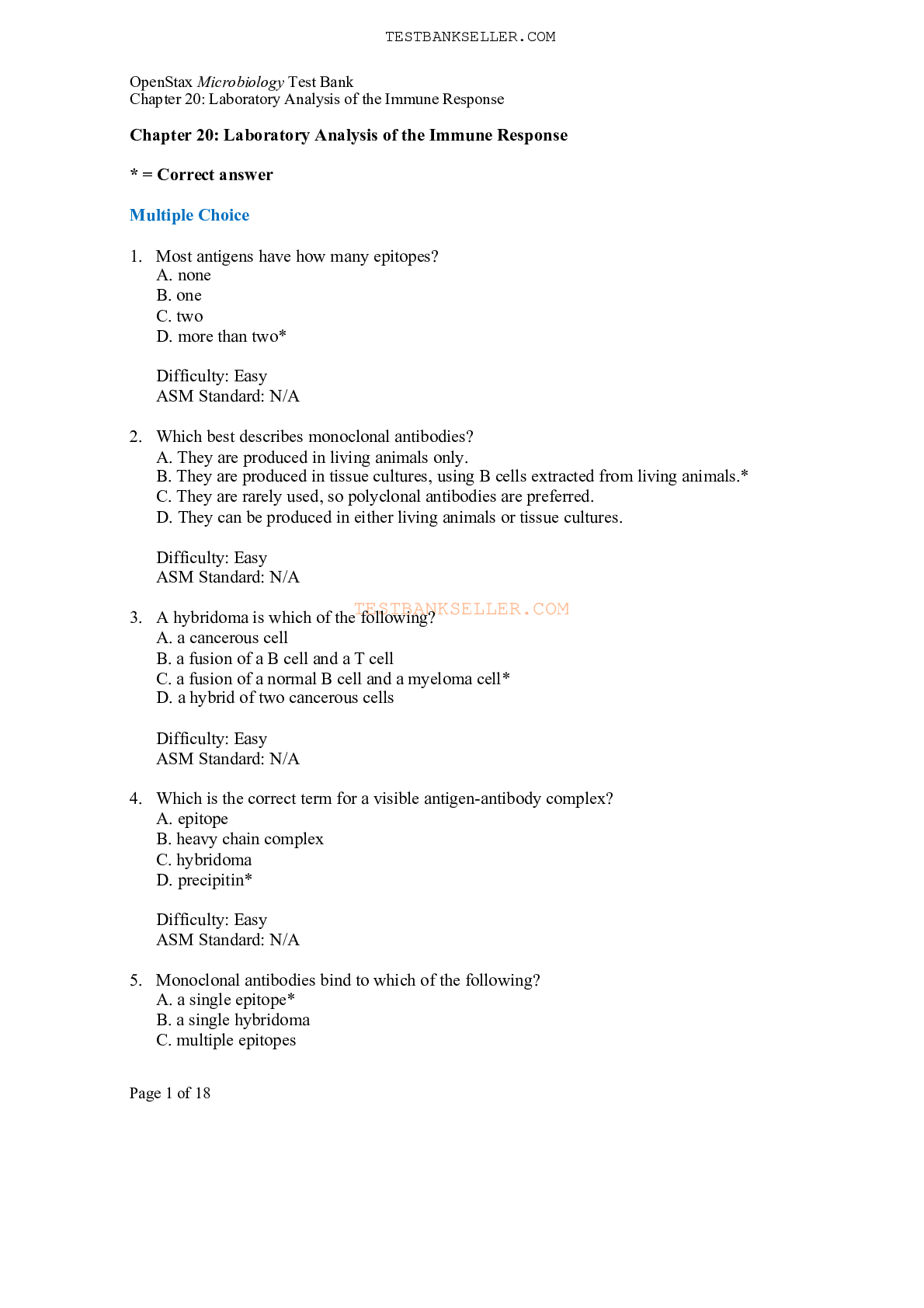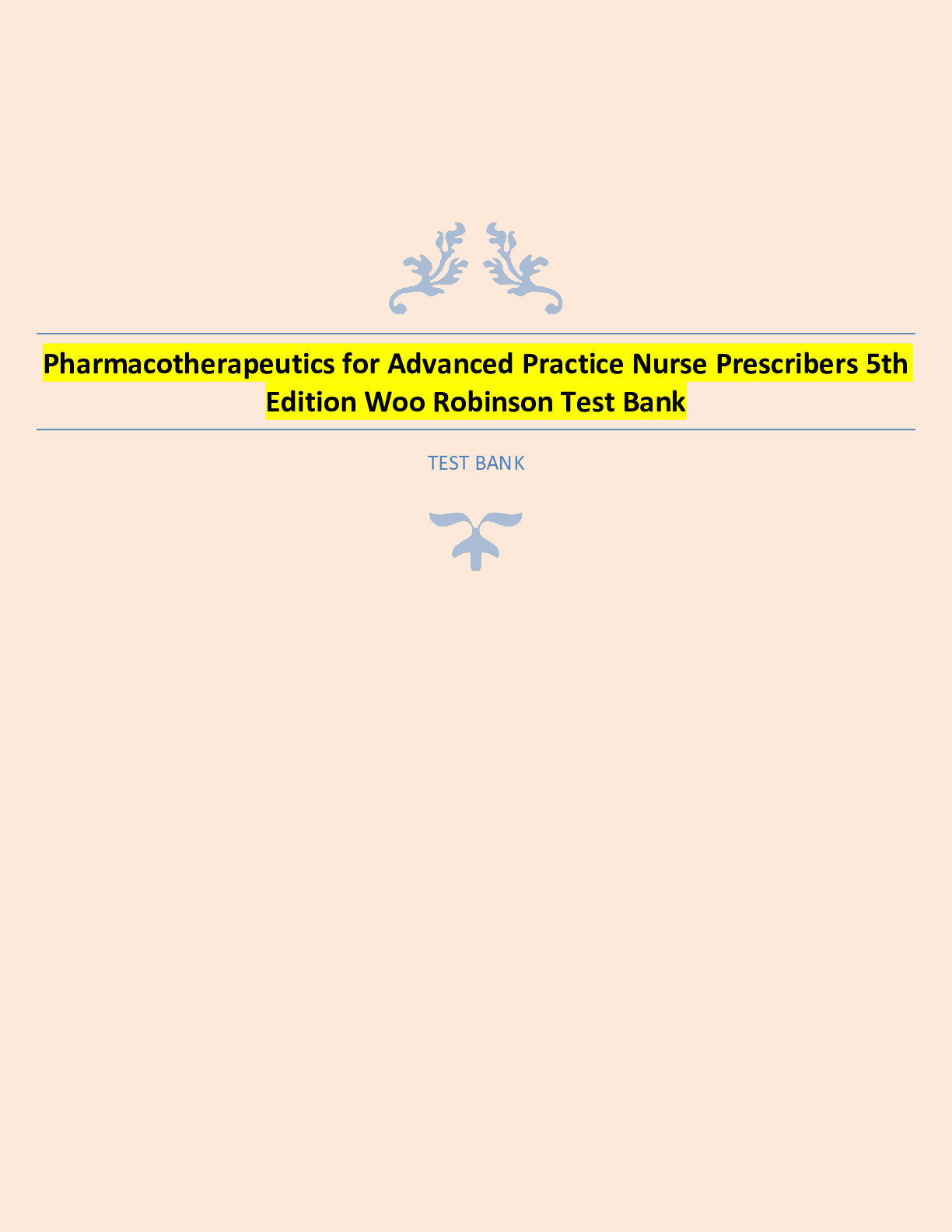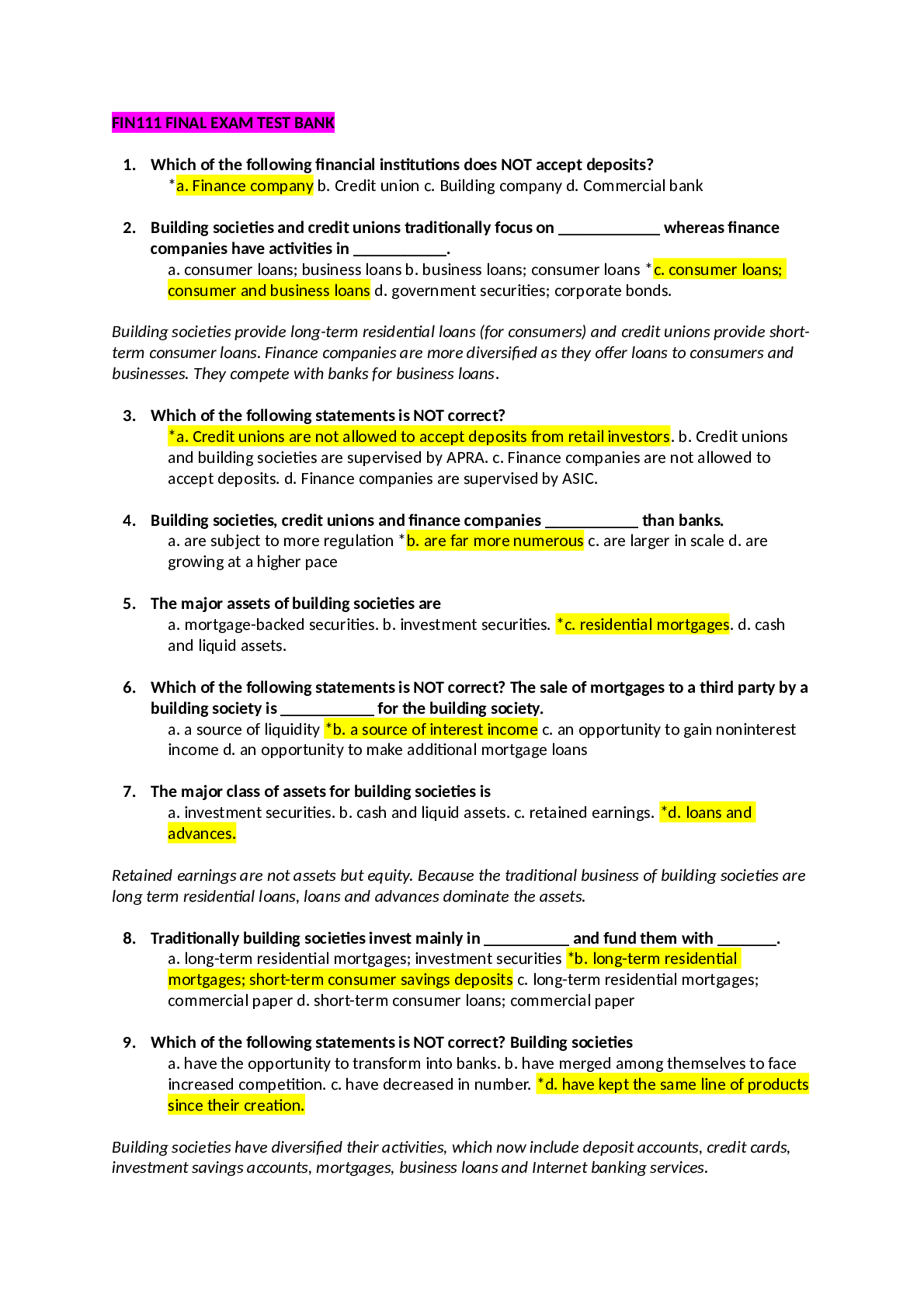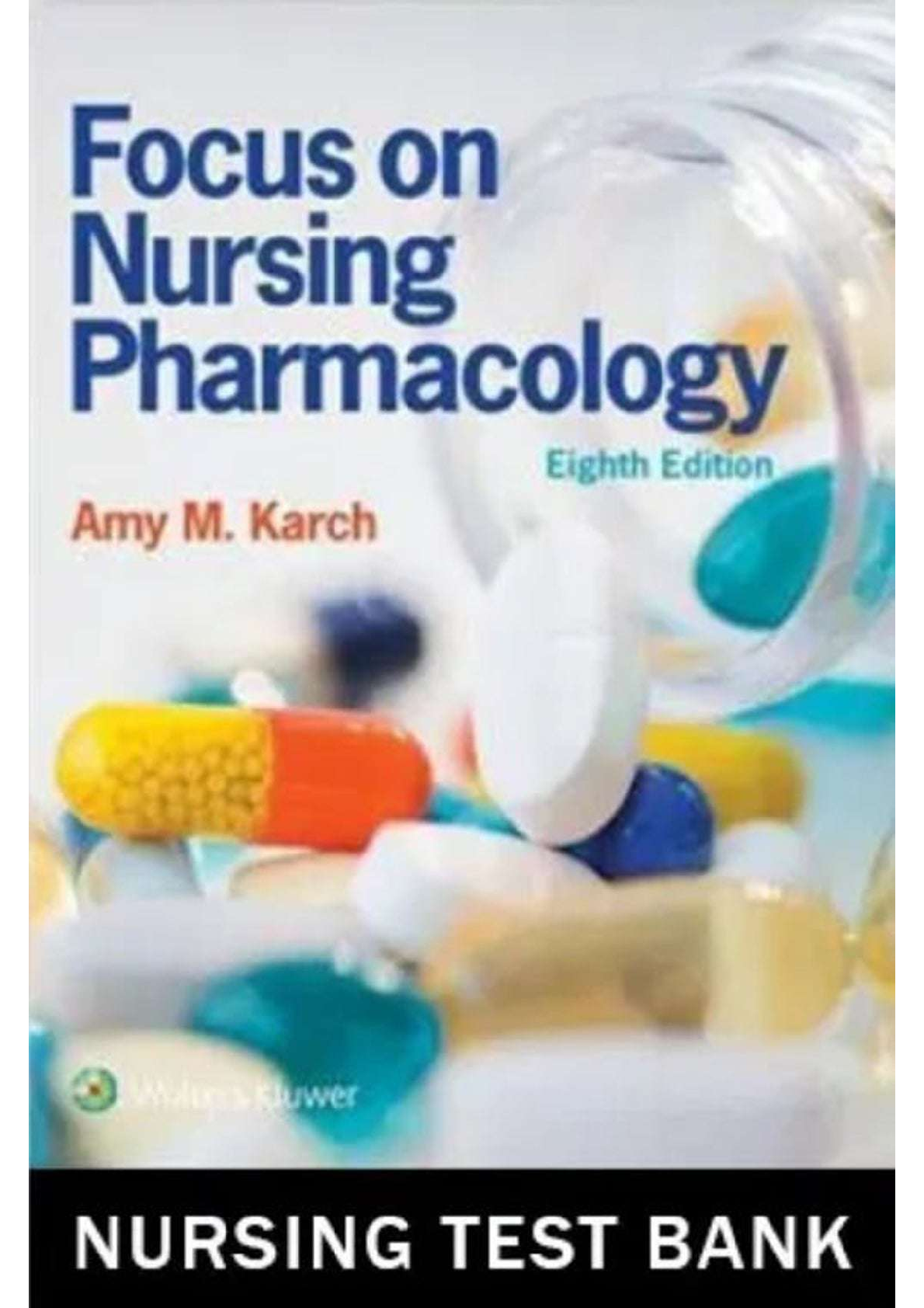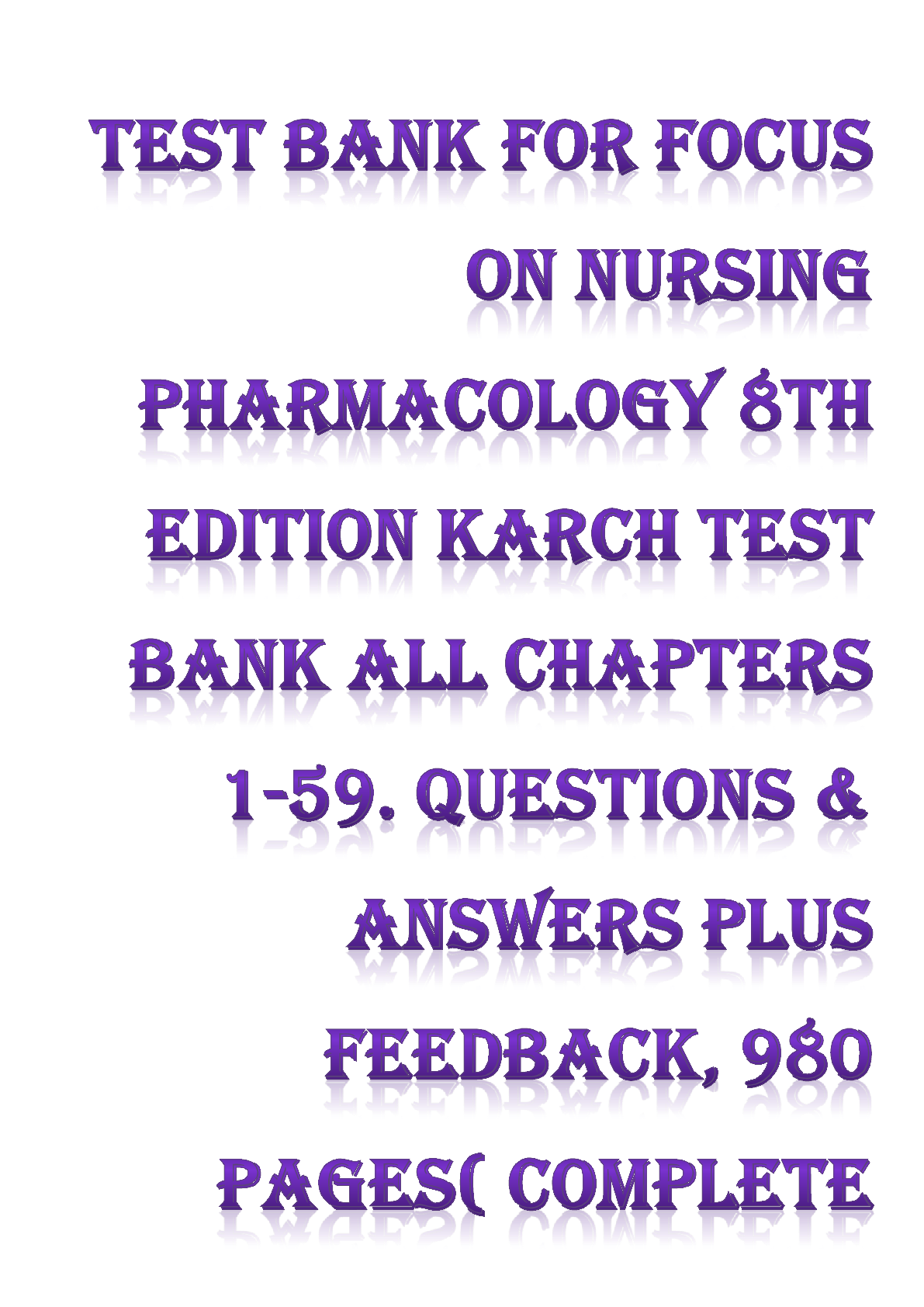*NURSING > TEST BANK > TEST BANK for Focus on Nursing Pharmacology 8th Edition by Karch Test All Chapters 1-59 Covered With (All)
TEST BANK for Focus on Nursing Pharmacology 8th Edition by Karch Test All Chapters 1-59 Covered With Answers + Rationales
Document Content and Description Below
Chapter 01 - Introduction to Drugs 1. A nurse working in radiology administers iodine to a patient who is having a computed tomography (CT) scan. The nurse working on the oncology unit administers c... hemotherapy to patients who have cancer. At the Public Health Department, a nurse administers a measles-mumps-rubella (MMR) vaccine to a 14-month-old child as a routine immunization. Which branch of pharmacology best describes the actions of all three nurses? A) Pharmacoeconomics B) Pharmacotherapeutics C) Pharmacodynamics D) Pharmacokinetics Ans: B Feedback: Pharmacology is the study of the biologic effects of chemicals. Nurses are involved with clinical pharmacology or pharmacotherapeutics, which is a branch of pharmacology that deals with the uses of drugs to treat, prevent, and diagnose disease. The radiology nurse is administering a drug to help diagnose a disease. The oncology nurse is administering a drug to help treat a disease. Pharmacoeconomics includes any costs involved in drug therapy. Pharmacodynamics involves how a drug affects the body and pharmacokinetics is how the body acts on the body. 2. A physician has ordered intramuscular (IM) injections of morphine, a narcotic, every 4 hours as needed for pain in a motor vehicle accident victim. The nurse is aware this drug has a high abuse potential. Under what category would morphine be classified? A) Schedule I B) Schedule II C) Schedule III D) Schedule IV Ans: B Feedback: Narcotics with a high abuse potential are classified as Schedule II drugs because of severe dependence Test Bank - Focus on Nursing Pharmacology (8th Edition by Karch) 3 liability. Schedule I drugs have high abuse potential and no accepted medical use. Schedule III drugs have a lesser abuse potential than II and an accepted medical use. Schedule IV drugs have low abuse potential and limited dependence liability. 3. When involved in phase III drug evaluation studies, what responsibilities would the nurse have? A) Working with animals who are given experimental drugs B) Choosing appropriate patients to be involved in the drug study C) Monitoring and observing patients closely for adverse effects D) Conducting research to determine effectiveness of the drug Ans: C Feedback: Phase III studies involve use of a drug in a vast clinical population in which patients are asked to record any symptoms they experience while taking the drugs. Nurses may be responsible for helping collect and analyze the information to be shared with the Food and Drug Administration (FDA) but would not conduct research independently because nurses do not prescribe medications. Use of animals in drug testing is done in the preclinical trials. Select patients who are involved in phase II studies to participate in studies where the participants have the disease the drug is intended to treat. These patients are monitored closely for drug action and adverse effects. Phase I studies involve healthy human volunteers who are usually paid for their participation. Nurses may observe for adverse effects and toxicity. 4. What concept is considered when generic drugs are substituted for brand name drugs? A) Bioavailability B) Critical concentration C) Distribution D) Half-life Ans: A Feedback: Bioavailability is the portion of a dose of a drug that reaches the systemic circulation and is available to act on body cells. Binders used in a generic drug may not be the same as those used in the brand name drug. Therefore, the way the body breaks down and uses the drug may differ, which may eliminate a generic drug substitution. Critical concentration is the amount of a drug that is needed to cause a therapeutic effect and should not differ between generic and brand name medications. Distribution is the phase of pharmacokinetics, which involves the movement of a drug to the body’s tissues and is the Test Bank - Focus on Nursing Pharmacology (8th Edition by Karch) 4 same in generic and brand name drugs. A drug’s half-life is the time it takes for the amount of drug to decrease to half the peak level, which should not change when substituting a generic medication [Show More]
Last updated: 1 year ago
Preview 1 out of 980 pages

Buy this document to get the full access instantly
Instant Download Access after purchase
Add to cartInstant download
We Accept:

Reviews( 0 )
$15.00
Document information
Connected school, study & course
About the document
Uploaded On
Jul 22, 2022
Number of pages
980
Written in
Additional information
This document has been written for:
Uploaded
Jul 22, 2022
Downloads
0
Views
109


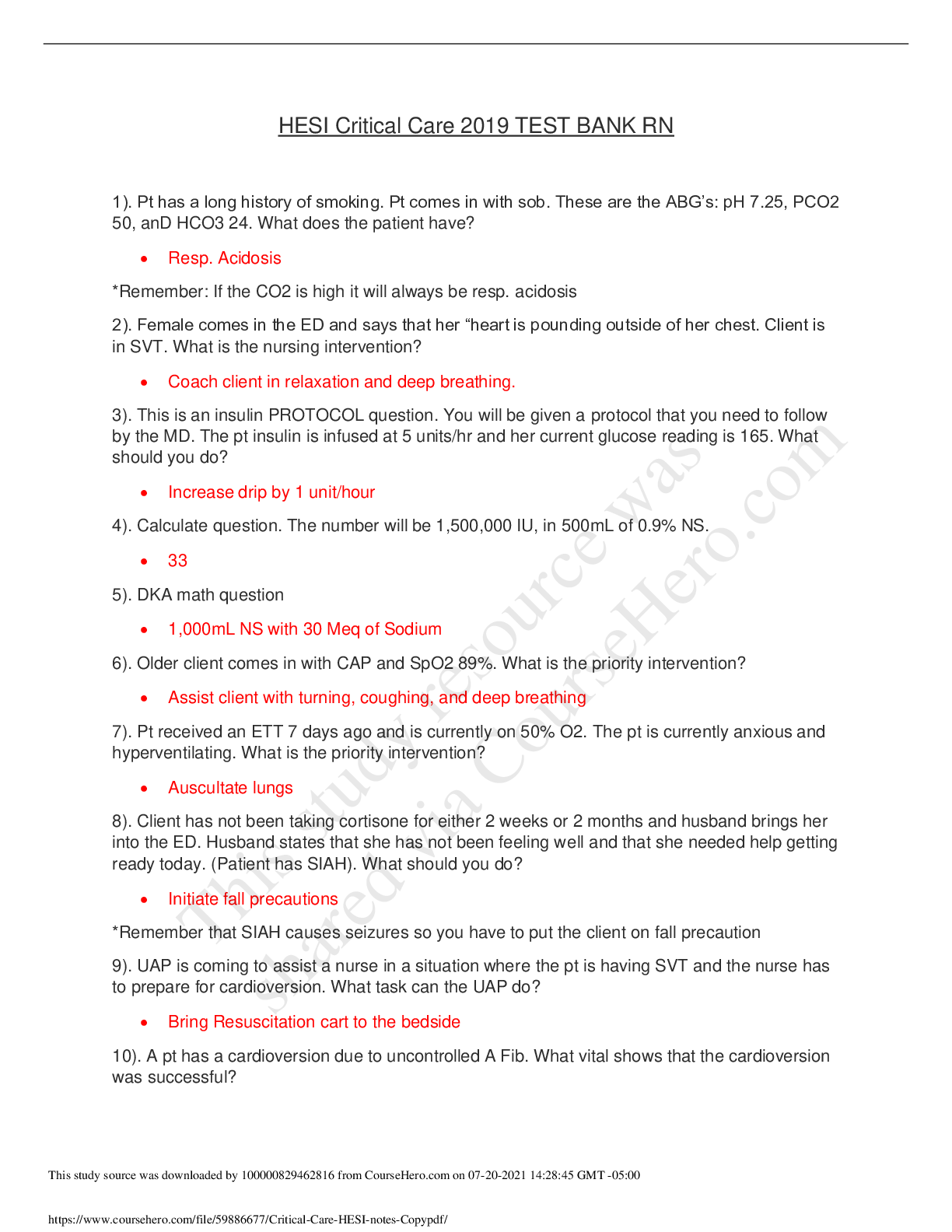


.png)

